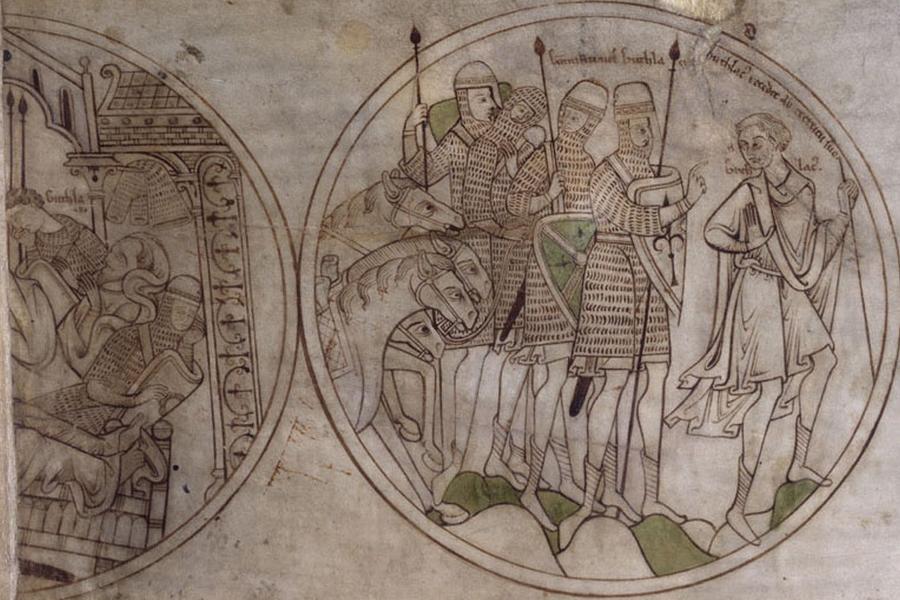Create an Amazon Wedding Registry

Find the perfect fit with Amazon Prime. Try Before You Buy.
Illustrations from
Harley Roll Y.6
Life of Guthlac
Half roundel of Guthlac deciding to devote himself to the religious life
and a full roundel of him leaving military service.

A larger image of this Half roundel of Guthlac deciding to devote himself to the religious life and a full roundel of him leaving military service.
Title: Life of Guthlac (the 'Guthlac Roll')
Origin: England (possibly The Benedictine abbey of Crowland, Lincolnshire as it has images of its benefactors, including king Ęthelbald of Mercia.)
Date: Last quarter of the 12th century or 1st quarter of the 13th century
Language: Latin
Script: Protogothic
Decoration: 18 tinted drawings in roundels (16 cm in diameter), with Latin captions; the first roundel has been trimmed and only the right half remains.
Dimensions in mm: 285 x 17
Notes: The Guthlac Roll is about 17cm wide and nearly 3m long, composed of four and a half pieces of parchment attached end-to-end, on which are drawn a series of scenes of the life of his life in roundels. Some scholars have suggested that the roundels are designs for stained-glass windows.
British Library Harley Roll Y.6
Referenced on p.65, Arms and Armour of the Crusading Era, 1050-1350, Western Europe and the Crusader States by David Nicolle
146A-B Guthlac Roll Lincolnshire, c.1200
(British Library, Ms. Harl. Roll Y.6, London, England)
It has been suggested that these drawings illustrating the life of St Guthlac were designs for stained glass windows or enamelled metalwork.
These particular figures might refer to the Saint's early life, when he was a soldier fighting for King Ethelred of Mercia.
If so, the unusual armour given to the warriors might be an artist's attempt to indicate early Anglo-Saxon origins.
The closest parallels to the helmets are found on two of the Scottish or Scandinavian Lewis chessmen.
Such helmets, which could also be related to other flat-topped types without face-masks,
may have been a feature of various backward regions under Scandinavian influence, such as Scotland, Wales and north-west England.
These men wear rather old-fashioned mid-sleeved hauberks reaching only to their thighs.
One of their spears even has archaic wings or lugs beneath the blade (B).
Their small, flat-topped shields are, however, very up-to-date.
Other 12th Century Illustrations of Costume & Soldiers


